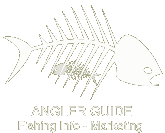 |  |
|
Navigation - Business - Great Lakes - Great Plains - Northeast - Northwest - Rocky Mountains - Southeast - Southwest - Technology - Trophy Catches
|
The Russian River and its tributaries comprise one of the most significant steelhead populations in the Central Coast area of California. The Russian River watershed also provides important habitat for endangered Coho and Chinook salmon. Although steelhead normally begin entering the river with the first heavy rains in the fall and can be found throughout the river and its tributaries through April, this year little rain fell from November through the first week in February, creating extremely low river conditions and few opportunities for steelhead to move into and up the river system.
Low water conditions in January also allowed the naturally occurring sandbar to form at the mouth of the river, blocking the migration of steelhead. “Once the first rains hit in February, the sandbar blocking the mouth of the river washed out, allowing the steelhead to move in from the ocean into the river system,” said Brett Wilson, Senior Hatchery Supervisor for the California Department of Fish and Wildlife (CDFW). “Based on what we are seeing right now, we should be able to meet our goal of taking enough eggs to rear a half million young steelhead for release into the Russian River.”
Emergency regulations that went into effect Feb. 19 closed most of the Russian River to fishing, adding extra protection for migrating steelhead and salmon.
March is an excellent time to visit the hatchery and view the steelhead moving through the concrete fish ladder into the restored stream habitat leading to the hatchery. A visitor viewing area also provides excellent photographic opportunity.
"The new restoration stream habitat just outside the hatchery intake gives visitors a chance to see steelhead up close and in native type of habitat,” Wilson said.
Warm Springs Hatchery is the end of a lengthy migration for the hatchery produced steelhead. From the Pacific Ocean, they enter the Russian River at Jenner and travel 40 miles upriver to Dry Creek near Healdsburg before following the stream 14 more miles west to the hatchery. Steelhead are also spawned at Coyote Valley Fish Facility on the East Fork of the Russian below Lake Mendocino.
The steelhead are generally held captive one week before the eggs are artificially taken. Spawning is open to the public and occurs throughout the entire season on most Thursdays at 10:30 a.m. The steelhead eggs spawned at the Hatchery and the Coyote Valley Fish Facility are incubated, hatched and reared at the hatchery for one year before they are released back into the Russian River to begin their migration to the sea.
Warm Springs Hatchery is located just below Warm Springs Dam on Lake Sonoma, approximately 14 miles above the confluence of Dry Creek with the Russian River at an elevation of 322 feet. The hatchery began operation in 1980 and is designed to produce a maximum of 161,300 pounds of salmonid fish annually. Although the hatchery is owned by the U.S. Army Corps of Engineers (USACE), it is operated by CDFW. CDFW also operates the Coyote Valley Fish Facility for trapping and spawning adult steelhead and imprinting steelhead destined for release in the Russian River. The Coyote Valley Fish Facility is located upstream on the east branch of the Russian River near the town of Ukiah.
Warm Springs Hatchery is a mitigation hatchery that produces steelhead to enhance the river’s natural steelhead population required due to the loss of natural spawning and rearing habitat associated with the construction of the Warm Springs and Coyote Valley dams. The mitigating agency is the USACE. The Warm Springs Hatchery is also home to the Coho Salmon Broodstock Program, which produces coho for release to 21 tributaries of the Russian River as part of a multi-agency recovery effort for this endangered species.
Comments
«Back | News Home
| |||||||||||||||||||||||||||||||||||